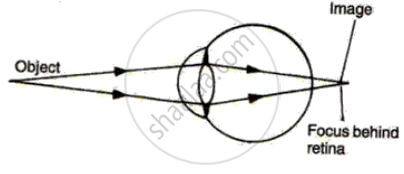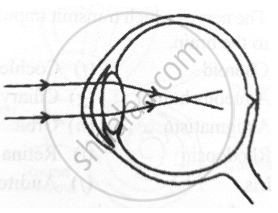Advertisements
Advertisements
प्रश्न
Out of rods and cones m the retina of your eye:
which detect colour?
उत्तर
Cones detect colour.
APPEARS IN
संबंधित प्रश्न
Match the following:
| Column I | Column II |
| (i) Myopia | (a) Converging power of eye lens becomes low |
| (ii) Hypermetropia | (b) Converging power of eye lens remains the same |
| (c) Converging power of eye lens becomes high |
What is the range of vision of a normal human eye?
Fill in the following blank with suitable word:
The iris controls the amount of................entering the eye.
A man driving a car can read a distant road sign clearly but finds difficulty in reading the odometer on the dashboard of the car. Which of the following statement is correct about this man?
(a) The near point of his eyes has receded away.
(b) The near point of his eyes has come closer to him.
(c) The far point of his eyes has receded away.
(d) The far point of his eyes has come closer to him.
The diagram alongside represents a certain defect of vision of the human eye.
(i) Name the defect.
(ii) Describe briefly the condition in the eye responsible for the defect.
(iii) Redraw the figure by adding a suitable lens correcting the defect. Label the parts through which light-rays pass.
(iv) What special advantage do human beings derive in having both eyes facing forward?

What are the functions of tears?
Name the following:
The region in the eye where the rods and cones are located.
Given below is a diagram depicting a defect of the human eye. Answer the questions that follow:

- Give the scientific term for the defect.
- Mention one possible reason for the defect.
- What type of lens can be used to correct the defect?
Name the following:
Two pigments of the sensory cells.
With reference to human eye answer the question that follow:
Name the part of the eye associated with keeping the lens moist and protecting it from physical shock.
